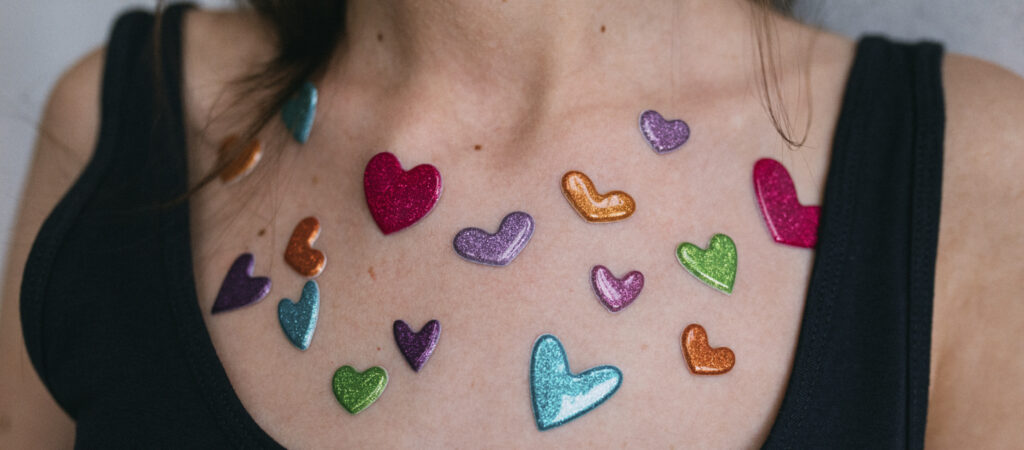Breaking Out on Your Chest? Here’s What to Do.

Medically reviewed by Dr. Nancy Shannon, MD, PhD on April 15, 2021
When we talk about acne and acne treatment, it’s usually acne on the face that’s being discussed. Though the face is the most common place for acne breakouts to occur, it’s far from the only one. While acne can generally appear anywhere on the body that hair follicles are located, one of the most common places for it to be found is the chest.
The acne that appears on the chest is not fundamentally different from the acne that appears on the face, and so similar treatment approaches are used but with some special considerations for the chest and back because the skin is different compared to the face. Here’s what you need to know about chest acne:
What Causes Chest Acne
The primary cause of acne anywhere on the body is clogged pores and inflammation that leads to white- and black-heads and pimples or cysts. Dirt, sweat, oils, or dead skin cells collect around the hair follicles to clog the pores, creating the perfect environment for acne to arise. Most people who have acne know this to be true, but don’t apply the same preventive and treatment methods to the chest that they do to the face. You should also look for cyclical patterns to chest acne. If it flares with your menstrual cycle, it might suggest “hormonal” acne, and hormonal treatments (like birth control pills or spironolactone) might be a solution.
Nurx offers prescription treatment for acne, anti aging, melasma, rosacea, and eyelash growth.
Another factor to consider when it comes to chest acne is clothing. If you exercise regularly, the clothing you wear may constrict the skin and make it easier for pores to become clogged during your workout. Moreover, parts of your chest that are exposed during the day may be at risk of exposure to sun irritation or air pollution, which studies have shown can exacerbate acne outbreaks.
How to Treat Chest Acne
As frustrating as it may be to experience, chest acne is as treatable as any other kind of acne. Acne appears on the chest for the same reasons it does elsewhere- pores get clogged (with bacteria, oils, dead skin cells) and there is inflammation. This leads to white and black heads + pimples and cysts. If you’re looking to avoid chest breakouts, here’s what you can do:
Use the right products.
Body acne is a completely normal and natural thing to experience, but certain products you use may be making the problem worse. Some lotions or body washes are comedogenic in nature, meaning that they contain ingredients which cause acne. Look specifically for products labeled “non-comedogenic” in order to be sure that your skincare routine isn’t making matters worse.
The clothes you wear may also be playing a factor here. Tight-fitting shirts can irritate the skin and make acne more likely, as can shirts made of non-breathable materials. Particularly when it comes to workout gear, opt for breathable, loose-fitting garments.
Exfoliate.
The pores on your chest can become clogged just like the ones on your face can. As your body sheds dead skin cells, there’s a risk that they’ll become trapped with oil in and around your pores, causing acne.. Products that exfoliate the skin can help to unclog the pores. Over the counter formulations of topical exfoliants include salicylic acid, adapalene 0.1%, and glycolic acid. There are prescription strength exfoliants (aka “retinoids”) that can help with stubborn chest/back acne.
Mind your diet.
There’s no one “acne-causing” diet, but some people may find that certain types of foods make their acne worse — diary, gluten, added sugars, and carbohydrates are some of the most common examples. Try cutting some of those food groups from your diet for a while to see if that has any impact on your chest acne. It won’t work for everyone, but some people may notice a difference.
Additionally, don’t neglect the importance of staying fully hydrated at all times. Proper water intake can help prevent your skin from becoming excessively dry and will also regulate your sweating patterns as well.
Shower regularly.
Washing your chest once or twice a day will help prevent the buildup of dirt, sweat, and dead skin cells that makes acne possible. Consider using an anti-acne body wash that contains ingredients like salicylic acid (to unclog pores) or benzoyl peroxide (for more inflammatory pimples and cysts).
Use a different laundry detergent.
Certain laundry products can cause something called contact dermatitis, which is different from acne but may appear similar. Laundry soaps heavy on dyes, perfumes, or artificial fragrances can cause negative reactions with the skin, making acne that much more likely. Use detergents that contain as few potential skin allergens as possible.
Chest acne can be especially stubborn. If you’re struggling to find ways to get rid of it, one of our medical providers here at Nurx can help you with that. Get in touch with a member of our team today to learn about what the best treatment options for you might be.
This blog provides information about telemedicine, health and related subjects. The blog content and any linked materials herein are not intended to be, and should not be construed as a substitute for, medical or healthcare advice, diagnosis or treatment. Any reader or person with a medical concern should consult with an appropriately-licensed physician or other healthcare provider. This blog is provided purely for informational purposes. The views expressed herein are not sponsored by and do not represent the opinions of Nurx™.





